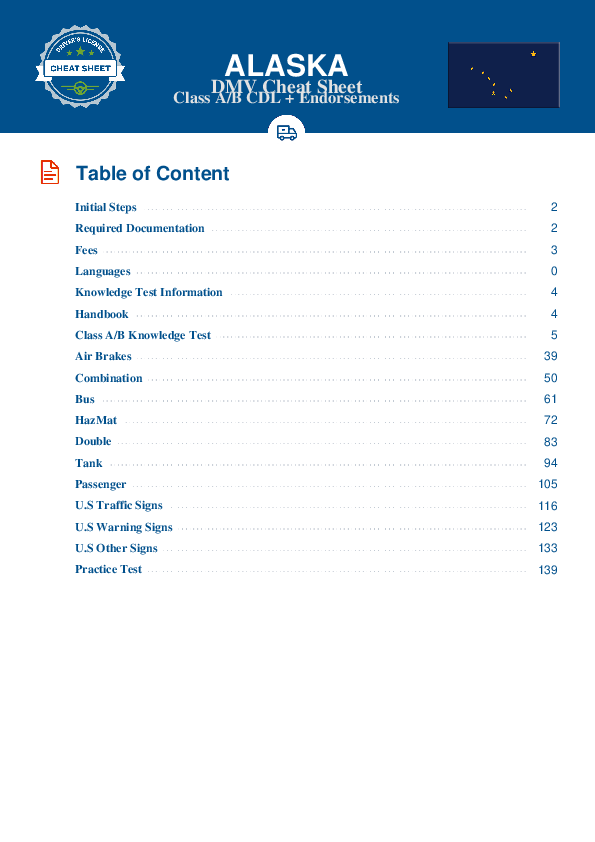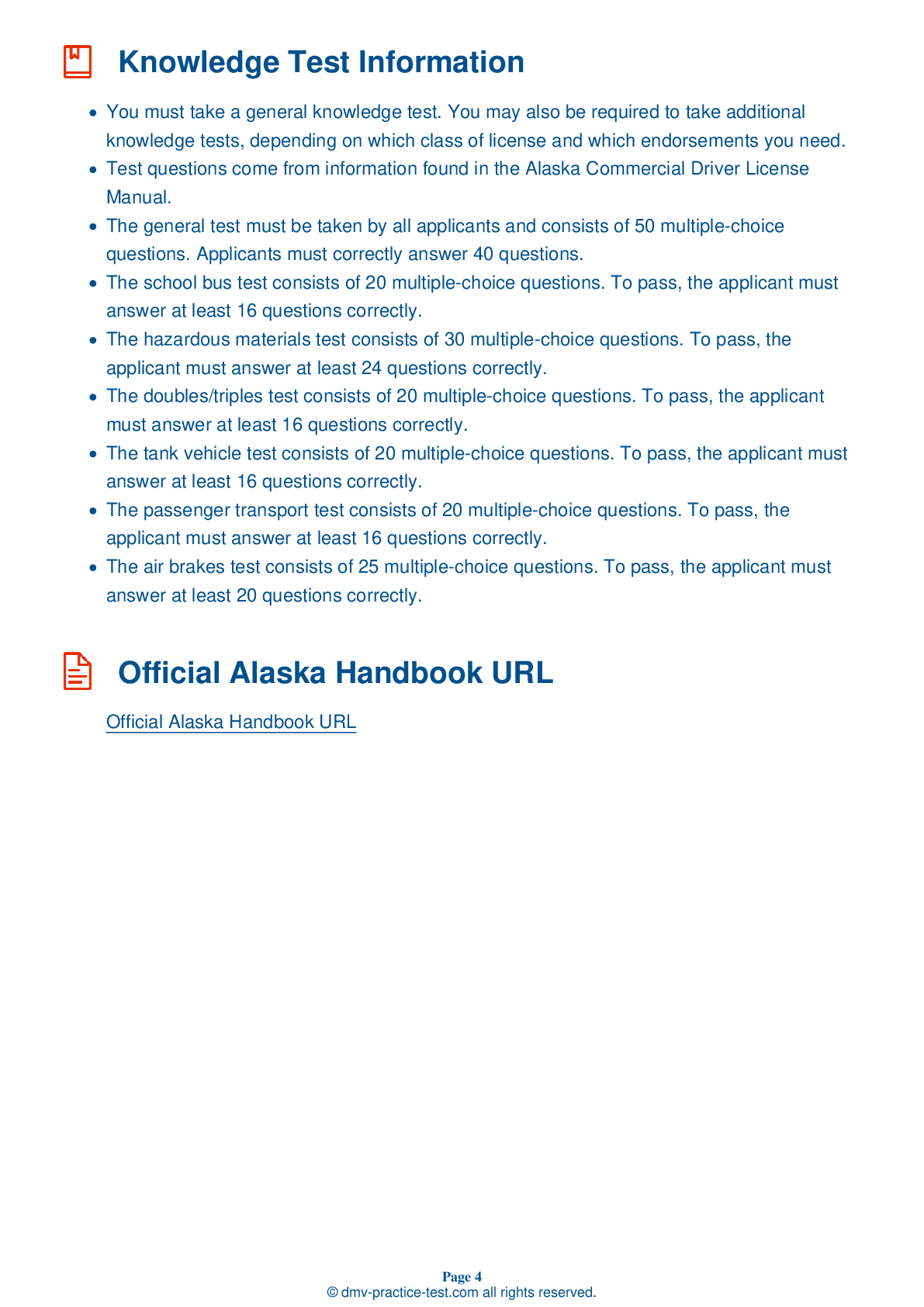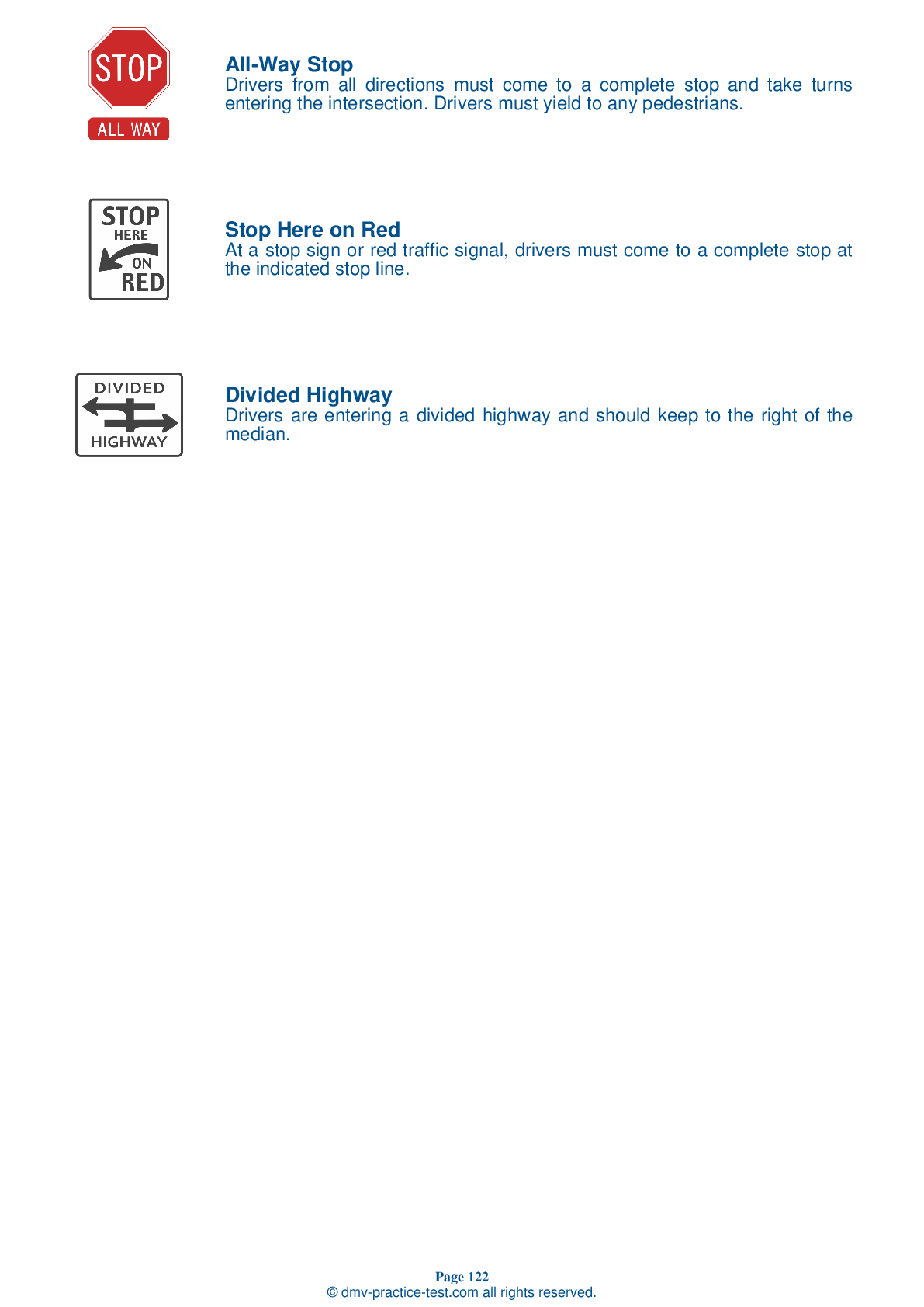Tank Endorsement Test | Alaska 2025 #2 Page 2 of 3
Train for FREE with our Alaska tank endorsement practice test online. The official exam test consists of several obligatory parts, with all of them checking your knowledge of different blocks of road rules. If you need to obtain a AK tank license in 2025, practice as much as possible. Free sample tests published on our website will help you check and improve your knowledge and boost your grades. Please bear in mind that DMV requirements for issuing a CDL tank vehicle endorsement may vary from state to state.
8 . When starting an engine, warning lights and buzzers should:
After starting a vehicle's engine, the warning lights and buzzers for oil, coolant, charging circuits, and the Anti-Lock Braking System (ABS) should go out right away.
9 . When making a tight maneuver, you should:
It is important for you to be aware of your surroundings at all times. To do this, regularly check your mirrors. You should make a particular point of checking your mirrors when merging, changing lanes, turning, and performing tight maneuvers.
10 . How long should it take for oil pressure to reach a normal level when starting a vehicle?
After starting a vehicle's engine, the oil pressure should come up to a normal level within seconds. Do not operate a vehicle if it has oil pressure that is low, dropping, or fluctuating.
11 . Skids caused by acceleration can usually be resolved by:
Skids caused by acceleration frequently occur on slippery road surfaces. These skids can generally be resolved by the driver removing their foot from the accelerator.
12 . If traveling at 55 mph on dry pavement, your minimum braking distance will be close to:
Your vehicle's stopping distance can be calculated by adding together your perception distance, your reaction distance, and your vehicle's braking distance. When traveling on dry pavement with brakes that are in good condition, your braking distance will be about 216 feet.
13 . Hydroplaning:
If there is enough water on the road, hydroplaning can occur at speeds as low as 30 mph. It is most likely if the tires' air pressure is too low or if tires' tread is worn.
14 . When driving a vehicle, rough acceleration is:
When accelerating, speed up smoothly and gradually so your vehicle does not jerk. Rough acceleration can cause mechanical damage.
See the exact questions that will be on the 2025 Alaska DMV exam.
99.2% of people who use the cheat sheet pass the FIRST TIME
Lillian MCcranie explains how our CDL study guide was helpful in passing the exam and recommends it to everyone.
Cameron tells us how he purchased the CDL exam, and found it to be a useful tool which helped him pass the exam and find a job.



